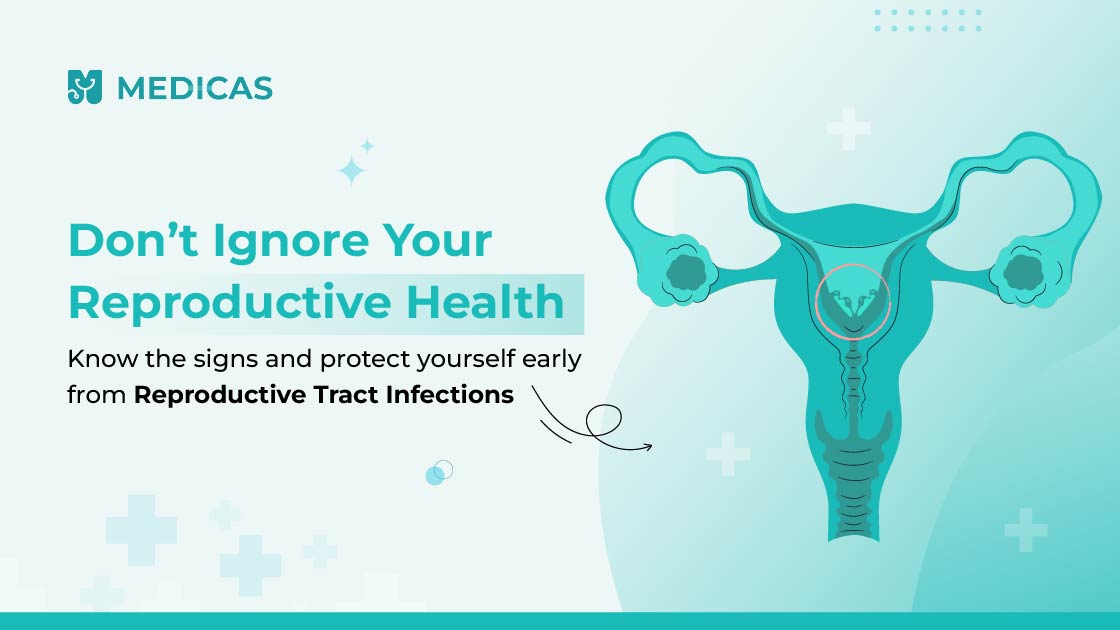Reproductive tract infections (RTIs) are more common than many realize, affecting both men and women but disproportionately impacting women due to anatomical and social factors. In India, where cultural stigmas and limited healthcare access can delay treatment, understanding RTI symptoms, causes of reproductive infections, and reproductive health issues is critical. This guide draws on my clinical experience to explain what RTIs are, how they differ from sexually transmitted infections (STIs), and practical steps for prevention and treatment. Whether you’re wondering can RTI cause infertility or seeking how to prevent reproductive tract infections, I’m here to provide clarity and actionable advice. Let’s dive in to help you take charge of your reproductive health, with options like lab testing or consulting me at my profile.
What is a Reproductive Tract Infection (RTI)?
A reproductive tract infection is an infection affecting the reproductive organs, including the vagina, uterus, fallopian tubes, or penis. RTIs can be caused by bacteria, viruses, fungi, or parasites and may or may not be sexually transmitted. In my practice, I see RTIs ranging from mild vaginal infections to serious conditions like pelvic inflammatory disease (PID). Understanding the types and causes helps you recognise when to seek care, whether in person or through an online doctor consultation.
Types of RTIs
RTIs fall into three main categories:
- Endogenous infections: Caused by overgrowth of bacteria or yeast naturally present, like bacterial vaginosis or candidiasis.
- Sexually transmitted infections (STIs): Such as chlamydia, gonorrhea, or herpes, are transmitted through sexual contact.
- Iatrogenic infections: Resulting from medical procedures, like catheter insertions or unsafe abortions.
Each type requires specific treatment, which I’ll cover later.
Common Causes of RTIs
The causes of reproductive infections are diverse. Bacterial infections, like those from Escherichia coli or Chlamydia trachomatis, are common culprits. Poor hygiene, hormonal changes, or unprotected sex can increase risk. In India, factors like humid climates and inadequate sanitation contribute significantly to reproductive tract infection in females.
How RTIs Differ from STIs
The difference between RTI and STI confuses many patients. While all STIs are RTIs, not all RTIs are sexually transmitted. For example, a yeast infection from hormonal changes is an RTI but not an STI. Understanding this distinction helps reduce stigma and guides appropriate treatment.
Symptoms to Watch Out For
Recognising RTI symptoms early is crucial to prevent complications like pelvic inflammatory disease (PID) or infertility. The symptoms of lower reproductive tract infections can be subtle, so paying attention to your body is key.
Vaginal Discharge and Odour
Abnormal vaginal discharge—whether in color, consistency, or odor—is a hallmark of reproductive tract infection in females. Bacterial vaginosis may cause a fishy odour, while yeast infections produce thick, white discharge. Men may notice penile discharge with certain STIs.
Pain During Urination or Intercourse
Pain or burning during urination or intercourse is a red flag. In my practice, women often report discomfort during sex as an early sign of reproductive health issues like PID or chlamydia.
Irregular Menstrual Bleeding
Unexplained vaginal bleeding or irregular periods can signal an RTI, especially if accompanied by pelvic pain. If you notice these, it’s time to consult a doctor or explore home remedies for supportive care.
Diagnosis and Testing Methods
Diagnosing a reproductive tract infection requires a combination of clinical evaluation and testing. I always emphasize the importance of professional diagnosis to ensure effective treatment.
When to See a Doctor
Knowing when to see a doctor for RTI is critical. Seek care if you experience persistent discharge, pain, fever, or irregular bleeding. For women, RTI in females during pregnancy can pose risks to the baby, so prompt action is essential. You can start with an online doctor consultation.
Lab Tests and Physical Exams
A pelvic exam, swab tests, or urine samples help identify the cause of an RTI. Blood tests may detect STIs like syphilis. These can be arranged through lab testing services for accurate results.
Treatment Options for RTIs
How to treat reproductive tract infection depends on the cause and severity. My approach focuses on relieving symptoms, clearing the infection, and preventing recurrence.
Antibiotic and Antifungal Therapies
Bacterial RTIs, like chlamydia or pelvic inflammatory disease (PID), are treated with antibiotics such as doxycycline or metronidazole. Yeast infections respond to antifungals like fluconazole. Completing the full course is critical to avoid resistance.
Lifestyle and Hygiene Practices
Supportive care includes maintaining good hygiene and avoiding irritants like scented soaps. Drinking water and wearing breathable clothing help. For more tips, check our home remedies.
RTIs in Women vs Men
RTI in females is more common due to the shorter urethra and proximity of the anus to the vagina, increasing infection risk. Men may experience RTIs as urethritis or prostatitis, often with symptoms like discharge or testicular pain. Both require tailored treatment, but women face higher risks of complications like infertility.
RTIs During Pregnancy
Reproductive tract infection in females during pregnancy can lead to preterm labor or low birth weight. I urge pregnant patients to seek immediate care for symptoms like unusual discharge or pelvic pain.
RTIs and Fertility Complications
Can RTI cause infertility? Yes, untreated RTIs, especially STIs like chlamydia, can scar the fallopian tubes, leading to infertility. Early treatment is vital to protect reproductive health issues.
How to Prevent Reproductive Tract Infections
Prevention is the best defense against RTIs. Simple habits can significantly reduce your risk and promote long-term reproductive health.
Safe Sex and Regular Screenings
Using condoms and limiting sexual partners help prevent reproductive tract infections, especially sexually transmitted infections (STIs). Regular STI screenings, available through lab tests, are crucial for sexually active individuals.
Importance of Personal Hygiene
Good hygiene, like wiping front to back and avoiding douching, reduces the risk of reproductive tract infection. In India’s humid climate, changing out of damp clothing and showering regularly are key.
When to Book an Online Doctor Appointment for RTI Symptoms
For mild RTI symptoms or initial concerns, an online consultation can be a game-changer, especially in India where access to specialists may be limited.
How Online Consultations Can Help with RTI Management
An online doctor for reproductive tract infection can assess symptoms, prescribe medications, and recommend tests. I’ve seen patients benefit from the convenience and privacy of virtual care, especially for sensitive reproductive health issues. Book an appointment for quick support.
Myths and Facts About RTIs
Misconceptions about reproductive tract infections can create unnecessary fear, stigma, or delays in seeking care. In my practice in India, I often hear patients share myths that prevent them from addressing reproductive health issues promptly. To help you separate fact from fiction, I’ve compiled a table debunking common myths about RTI symptoms, causes of reproductive infections, and more, ensuring you have accurate information to make informed decisions.
| Myth | Fact |
| All reproductive tract infections are sexually transmitted infections (STIs). | Many RTIs, like bacterial vaginosis or yeast infections, are not sexually transmitted. They can result from hormonal changes, poor hygiene, or other causes of reproductive infections. |
| RTIs only affect women. | Men can also develop reproductive tract infections, such as urethritis or epididymitis, though RTI in females is more common due to anatomical differences. Symptoms in men may include penile discharge or testicular pain. |
| Reproductive tract infections always resolve on their own. | Untreated RTIs can lead to serious complications, like pelvic inflammatory disease (PID) or even infertility. Seeking timely care is critical to treat reproductive tract infection effectively. |
| You can only get an RTI from sexual activity. | While sexually transmitted infections (STIs) are one cause, RTIs can also stem from non-sexual factors like poor hygiene, douching, or medical procedures, highlighting the difference between RTI and STI. |
| RTIs don’t affect fertility. | Can RTI cause infertility? Yes, untreated RTIs, especially those involving chlamydia or gonorrhea, can scar reproductive organs, leading to infertility in both men and women. |
| Home remedies alone can cure all RTIs. | While some home remedies can support mild reproductive tract infection treatment at home, most RTIs require antibiotics or antifungals prescribed by a doctor to fully resolve. |
| RTIs are always symptomatic and easy to spot. | Some RTIs, particularly in early stages, may have subtle or no symptoms of lower reproductive tract infections, making regular screenings vital, especially for RTI in females. |
Clearing up these myths empowers you to seek care without hesitation, whether through an online doctor consultation or an in-person visit. Understanding the truth about reproductive tract infections can help you prevent reproductive tract infections and protect your long-term health.
Conclusion
Reproductive tract infections are a common but manageable health concern, especially in India where environmental and social factors increase their prevalence. By understanding RTI symptoms, the difference between RTI and STI, and how to prevent reproductive tract infections, you can protect your health and avoid complications like can RTI cause infertility. Whether you’re managing symptoms of lower reproductive tract infections or seeking guidance for reproductive health issues, don’t hesitate to act. Reach out through an online doctor consultation, book a lab test, or connect with me via Medicas. My years in practice have shown me that early action and informed choices lead to better outcomes.
Frequently Asked Questions
- What are the signs that I might have a reproductive tract infection? Look for abnormal discharge, pain during urination or sex, irregular bleeding, or pelvic discomfort. Early attention prevents complications.
- Can RTIs be treated at home or do I need medical help? Mild reproductive tract infections may improve with hygiene and home remedies, but most require medical treatment to fully resolve.
- How do I book an online doctor appointment for RTI concerns? Visit this link to schedule a virtual consultation and discuss your symptoms confidentially.
- Are online doctor consultations safe for discussing reproductive health issues? Yes, online consultations for reproductive tract infections are safe, private, and effective for initial assessment and treatment, especially for sensitive concerns.
Disclaimer
Medical Advice: The information provided in this blog post is for educational purposes only and should not be considered as a substitute for professional medical advice, diagnosis, or treatment. Always consult with a qualified healthcare professional for personalized guidance regarding your specific medical condition.
Accuracy of Information: While we strive to provide accurate and up-to-date information, the field of medicine and viral fevers is constantly evolving. The content in this blog post may not reflect the most current research or medical guidelines. Therefore, it is advisable to cross-check any information provided with reliable sources or consult a healthcare professional.
Individual Variations: The symptoms, causes, treatment options, and preventive measures discussed in this blog post are general in nature and may not apply to everyone. It is important to remember that each individual’s situation is unique, and personalized medical advice should be sought when making healthcare decisions.
External Links: This blog post may contain links to external websites or resources for additional information. However, we do not endorse or have control over the content of these third-party websites. Accessing these links is done at your own risk, and we are not responsible for any consequences or damages that may arise from visiting these external sources.
Results May Vary: The effectiveness of treatment options or preventive measures mentioned in this blog post may vary from person to person. What works for one individual may not work the same way for another. It is essential to consult with a healthcare professional for personalized advice tailored to your specific needs.



